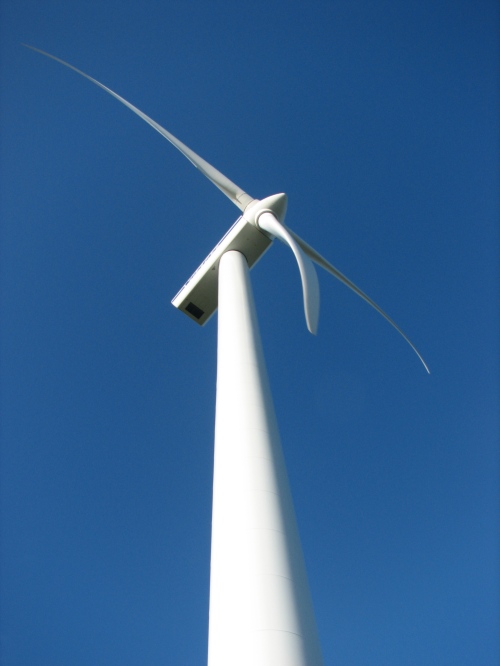The wind industry has been getting a lot of love of late from the Obama administration.
The president spent Earth Day at an Iowa factory that makes wind turbine towers and announced new regulations for offshore wind farms. Meanwhile, Interior Secretary Ken Salazar has been talking up the potential of offshore wind to generate as much as 20% of the eastern seaboard’s electricity that is now provided by coal-fired power plants.
But such scenarios won’t come to pass unless the administration seriously tackles the transmission grid problems that are keeping wind from becoming a nationwide source of green energy, according to panel of wind industry executives who spoke at Fortune Magazine’s Brainstorm Green panel this week.
“The real challenge is to connect wind farms in the Great Plains with the population centers of the Midwest,” said Bob Gates, senior vice president of commercial operations for Clipper Windpower. California-based Clipper is one of two U.S.-owned wind turbine makers (the other being General Electric (GE) ).
For instance, Clipper and BP (BP) have signed an agreement to build a 5,000-megawatt wind farm – the nation’s largest – in South Dakota. But the deal is more a dream at this stage because there are no power lines to transmit such massive amounts of electricity to Chicago and other Midwestern cities. (Gates said there is enough transmission available to begin construction this summer of a small 25-megawatt portion of the wind farm.)
The Obama administration has devoted billions of dollars in stimulus package funding to transmission projects and the Federal Energy Regulatory Commission last week approved incentives for a company planning to build a $12 billion “Green Power Express” transmission project to bring wind to Midwest metropolises.
Gates and the other panelists — Andris Cukurs, CEO of Indian turbine maker Suzlon’s North American operations; Don Furman, a transmission executive with Spanish wind developer Iberdrola Renewables, and James Walker, vice chairman of French-owned wind developer enXco – said the development of wind offshore from East Coast cities would ease transmission bottlenecks.
“Connecting offshore wind to cities is relatively cheap and easy compared to bringing wind power from the Dakotas to New York City,” Gates said. Another way to work around transmission gridlock would be to develop highly efficient small turbines that could be placed near cities and existing power lines, said Gates.
Despite Obama’s embrace of wind, the executives said they don’t see the industry resuming its record growth in 2008 – when U.S. wind capacity more than doubled – until 2010 or later. The credit crunch delayed or scuttled numerous wind farms and turbine orders have fallen dramatically.
One bright spot: Growing interest from well-capitalized utilities in directly investing in wind farms.
“Utility ownership is about 15% of the U.S. turbine fleet,” said Furman of Iberdrola Renewables. “I see more utility ownership in the coming years,, perhaps up to a third of the fleet.”
 photo: Todd Woody
photo: Todd Woody
